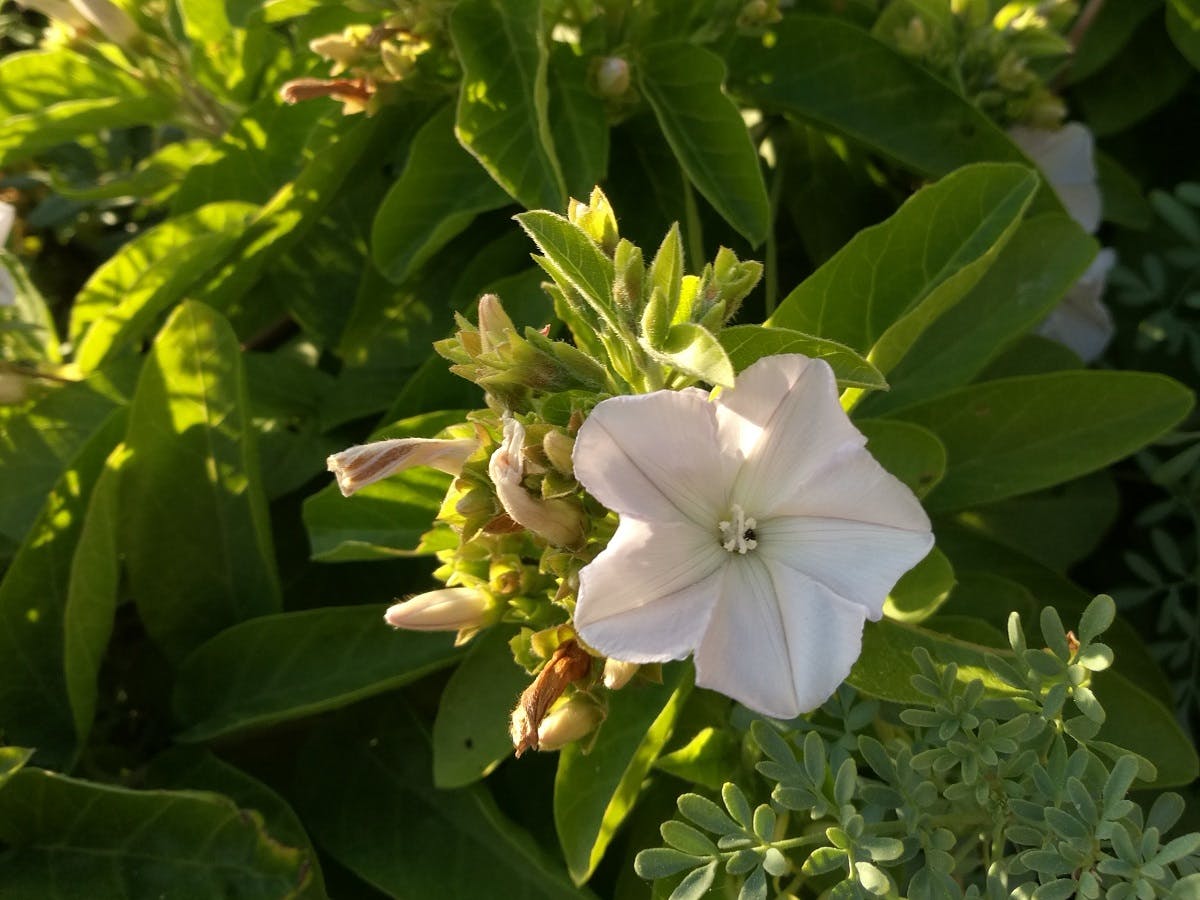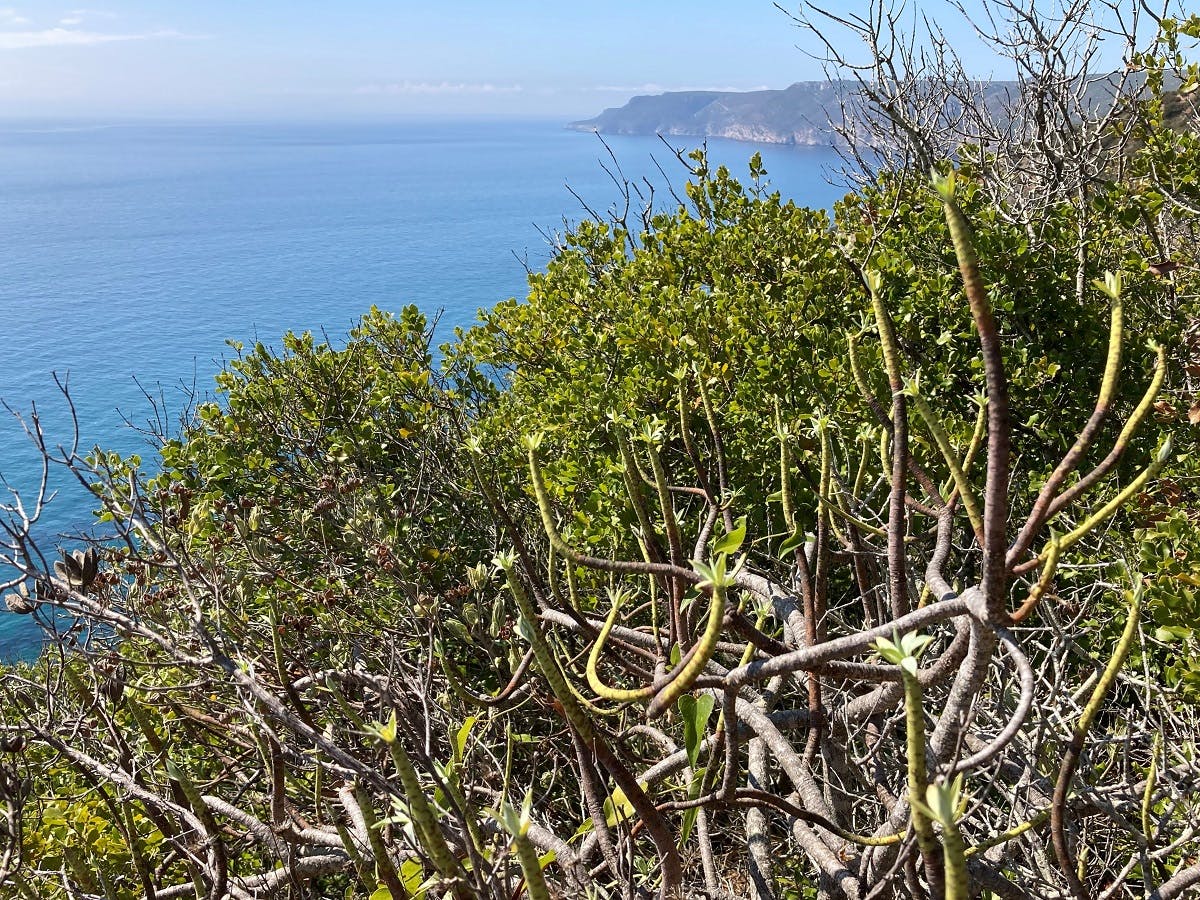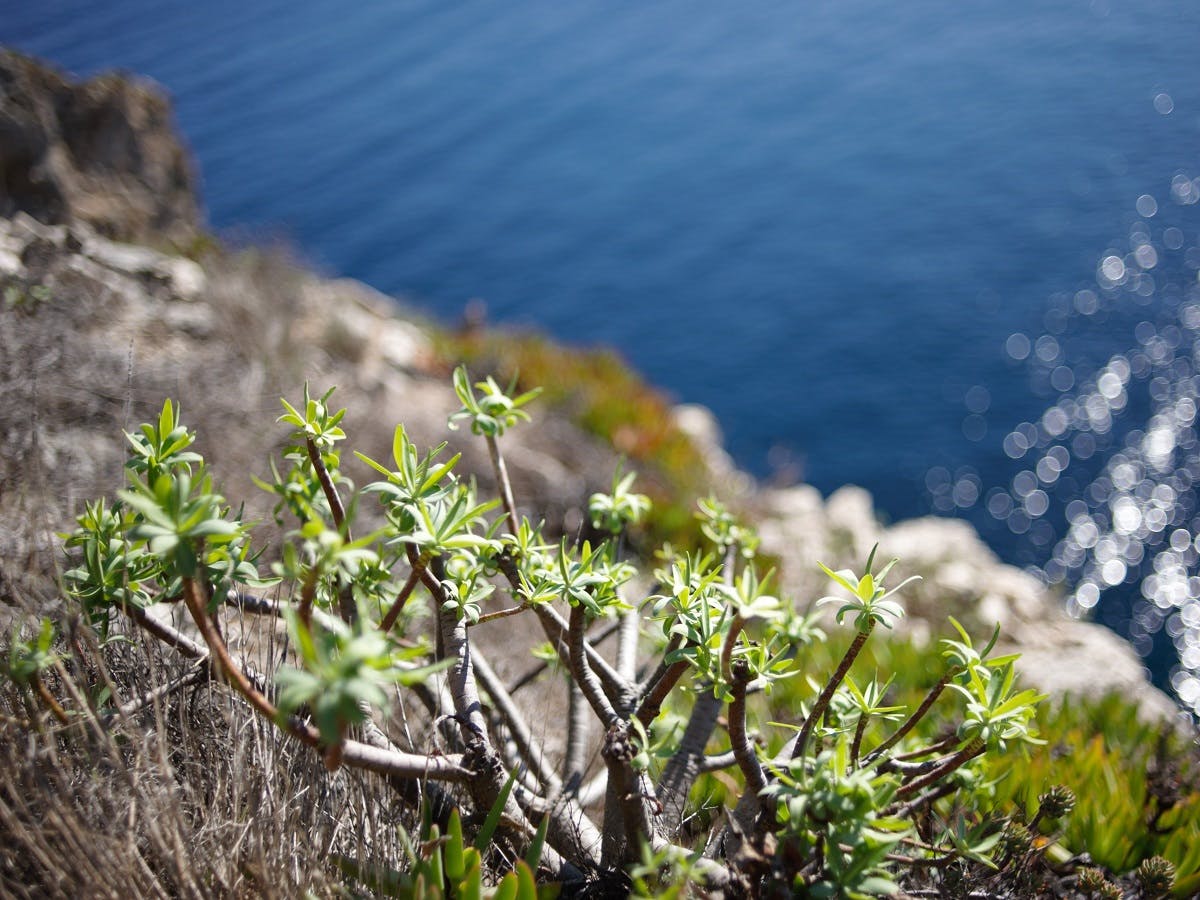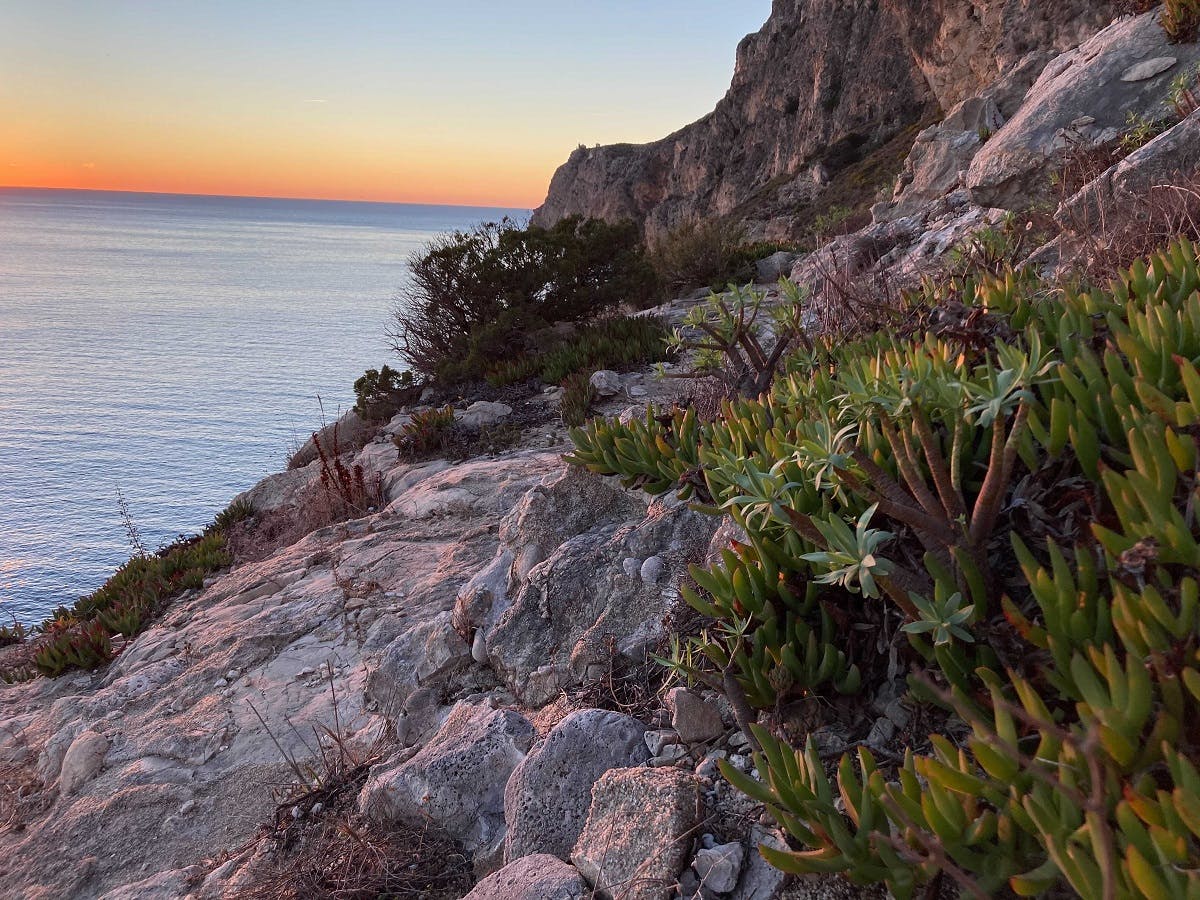- The intervention
- Project updates
- Learn more about how and why we want to protect these plants
- Two plant species in risk of extinction
- Other rare plants
- How did the invasive plant get here?
- Why local rock climbers are joining us
- Using a drone for cliff plant monitoring
- The partnerships making this project possible
- Management Plan
- Budget spent: £8,146
- Status: In Progress
On a stunning 15 km stretch of Portuguese coast two special cliff plants found nowhere else on earth are facing extinction. The main threat comes from a dominating invasive species carpeting the cliff called the ‘ice plant’. Access to the sheer cliff faces poses a challenge for their conservation. This is why we’ve gathered local rock climbers and cavers, passionate about local biodiversity, to remove the invasive ice plant. We’re also using drone technology to document changes to the vegetation. Protecting these precious plants not only reduces biodiversity loss but treasures nature in all its glorious forms.
The intervention
Invasive plant removal and community engagement
We are organizing events with local volunteers to help remove the invasive ice plant from the area where it is competing with the rare cliff plants. This is done by manually pulling the plants and removing them from the area. With these events we are aiming to:
- stop the invasion before it spreads further and control efforts become unfeasible;
- take direct action to restore diverse cliff plant communities (similar efforts have been successful elsewhere);
- spread awareness about these species to prevent any damage by park visitors;
- encourage dialogue between all the groups involved in protecting, studying and enjoying the area.
Monitoring with a drone and photogrammetry
We will be capturing drone images to survey inaccessible cliffs and ensure we have the evidence needed to guide our conservation actions. We expect the technology will have multiple uses:
- detecting the presence of rare plant species in hard to access locations;
- monitoring the distribution of the invasive ice plant and use this data to coordinate removal events;
- monitor the vegetation before and after ice plant removal to check if the vegetation is recovering as expected or if further intervention is needed.
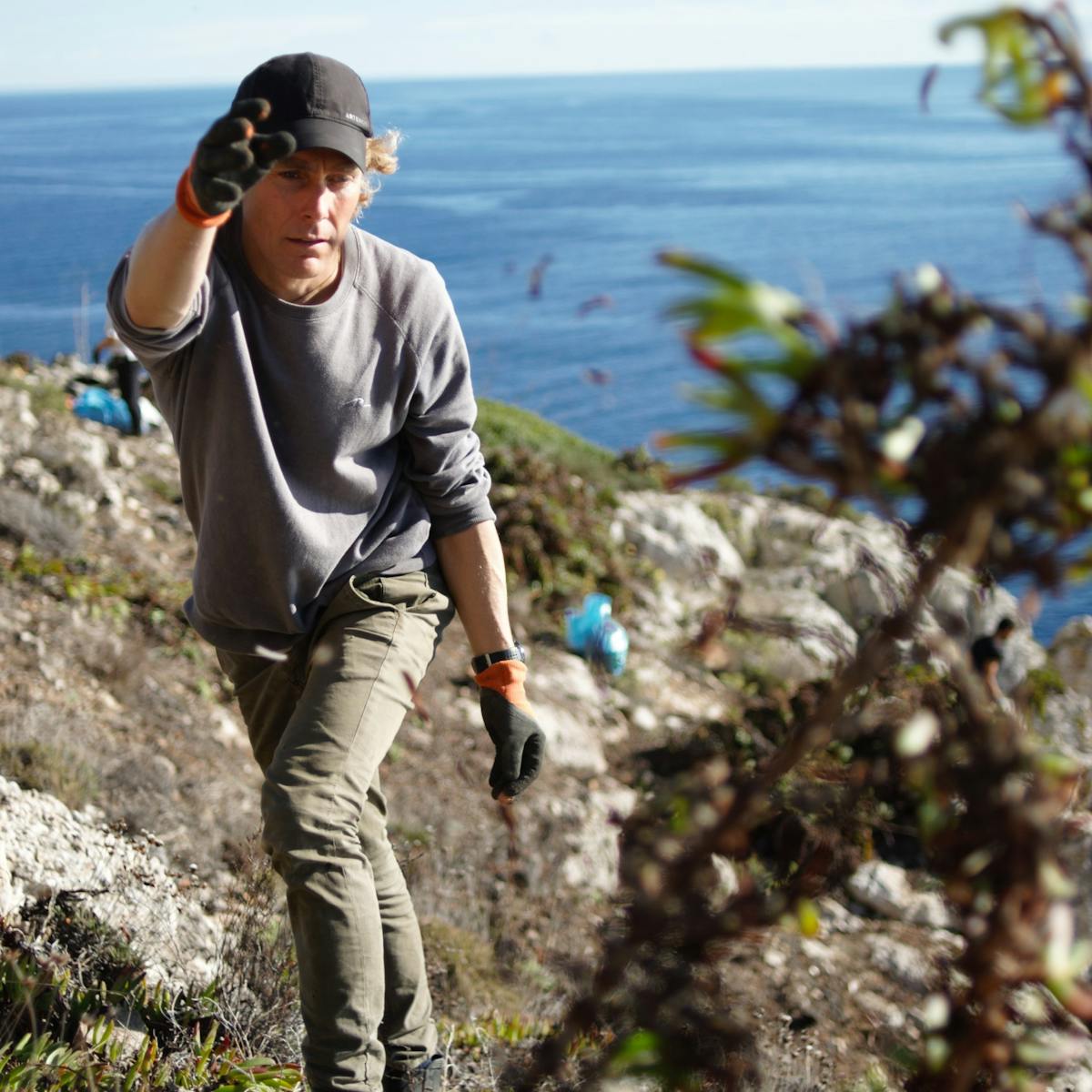
Project updates
November 2023: Using rope access to remove invasive plants from cliff ecosystems | VLOG
December 2023: Using a high tech drone to map our cliff project for invasive plants | VLOG
Learn more about how and why we want to protect these plants
We've described the project itself above, but read on to see why this is so important.
Two plant species in risk of extinction
For some plants, the cliffs of Cabo Espichel are the ideal refuge from human disturbance and from other species that would outcompete them elsewhere. Two of these plant species have their entire global distribution restricted to this 15 km stretch of coastline and have been listed as endangered in the recently published Red List of Vascular Plants of continental Portugal.
Convolvulus fernandesii is a species of vine that grows on the cliff faces and at their base, sometimes climbing over other plants and shrubs. It puts out beautiful white flowers in the spring and in the summer its bright green leaves turn yellow. It is extremely rare with the latest estimate putting the total number of mature individuals at 500.
Euphorbia pedroi is a sub-succulent plant that is adapted to dry conditions which can attain up to 2m in height and more than 2m in width. Its leaves have a very distinct tone of green before they are shed every year during the heat of summer. Although it appears to be more numerous than C. fernandesii, there are only three known subpopulations in the area and it is unclear to what extent these are connected.
The extreme scarcity of each of these plants makes this a worthwhile mission to ensure their uniqueness remains instead of losing them forever.
Threats that are thought to be affecting both species include:
- increases in the frequency and intensity of droughts;
- trampling by unaware park visitors;
- the spread of the invasive ice plant (Carporboruts edulis).

The rare plants of Cabo Espichel
Take a look at this special vegetation that can only be seen here. The final image shows the spread of the invasive 'ice plant'.
Other rare plants
Other than the two narrow endemics, this part of the coast is very rich in plant diversity with about 1400 plant species recorded. Some of these are rare in Portugal and have been identified as a conservation priority by the Portuguese Botanical Society including:
- Scrophularia sublyrata
- Limonium echioides
- Withania frutescens
- Lavatera maritima
- Patellifolia patellaris
- Volutaria crupinoides
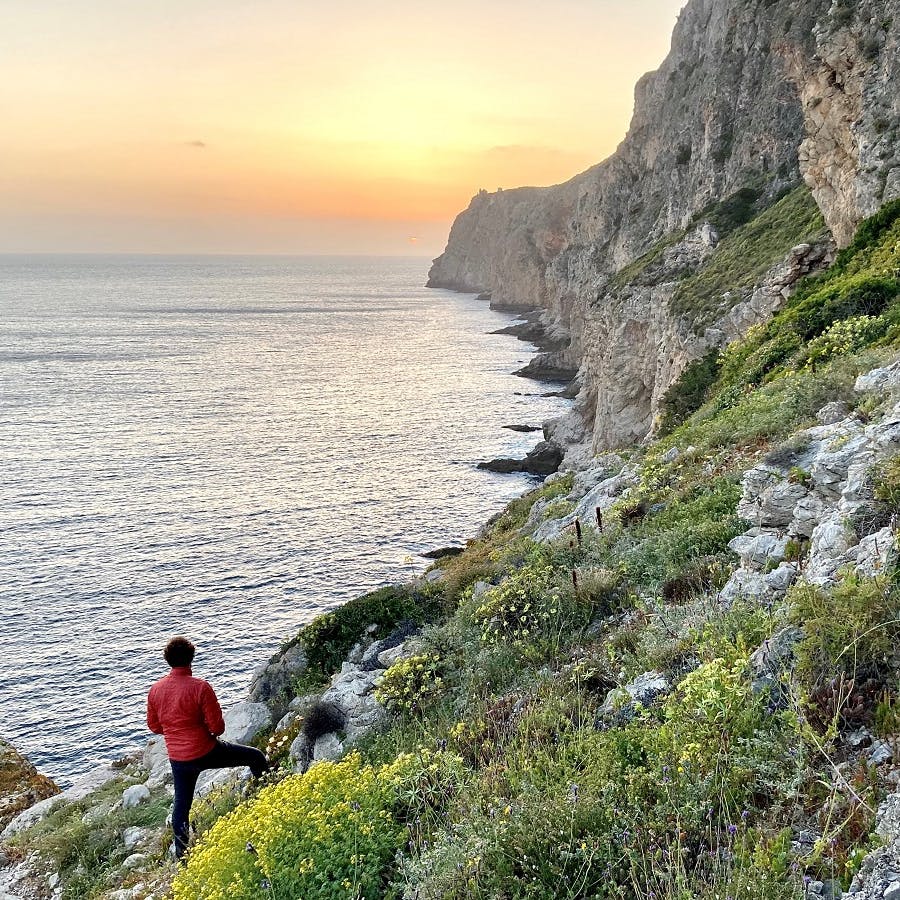
How did the invasive plant get here?
One serious threat for these rare species is the spread of ice plant (Carpobrous edulis) in the area. This is an invasive succulent plant that forms dense mats which change the soil composition and displace native species that have been evolving together for millennia. It can spread rapidly on dunes and coastal cliffs wiping out entire plant communities. As in other European countries, the species was introduced in Portugal during the 1900s because it was thought to help prevent coastal erosion. It is currently widespread along the Portuguese coast.
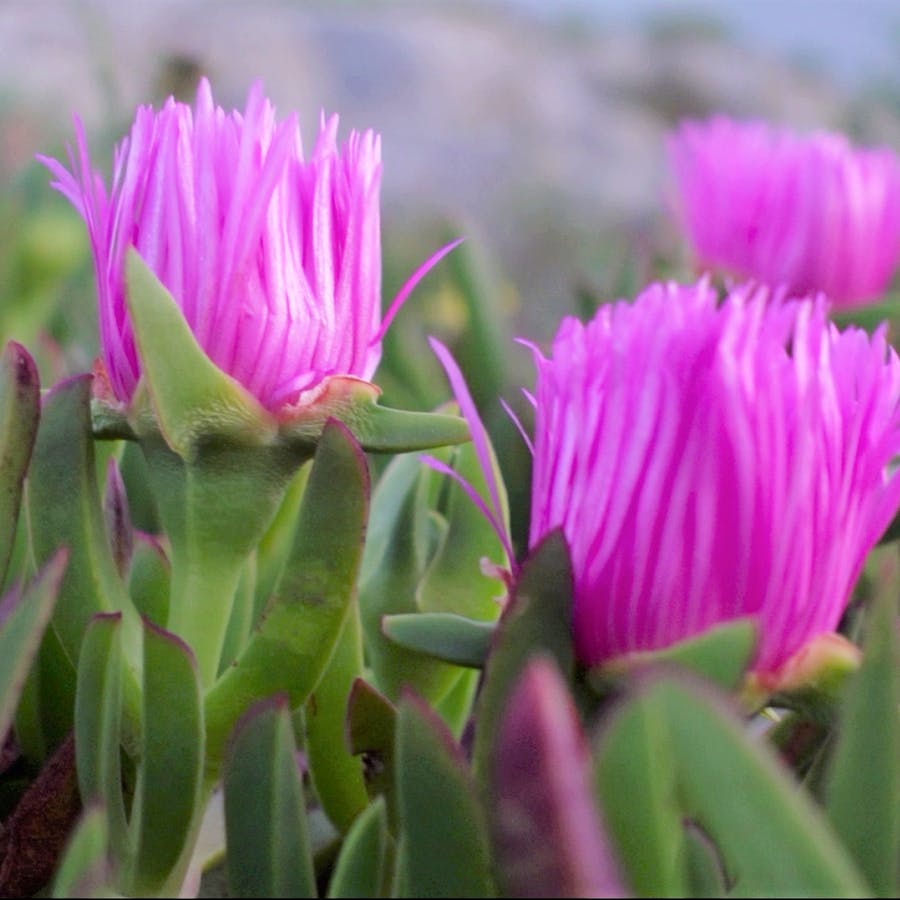
Why local rock climbers are joining us
Rock climbers are among the people that spend the most time exploring these cliffs and so are more likely to encounter these rare species. By spreading awareness among the climbing community we want to help reduce the chances that someone will damage these plants due to a lack of knowledge. What’s more, rock climbers are comfortable navigating these hard to access locations so they make ideal volunteers to help us plan and carry out interventions in the area. Having said this, everyone is welcome to join and we hope to get a wide range of people excited about plants and other cliff-dwelling biodiversity!
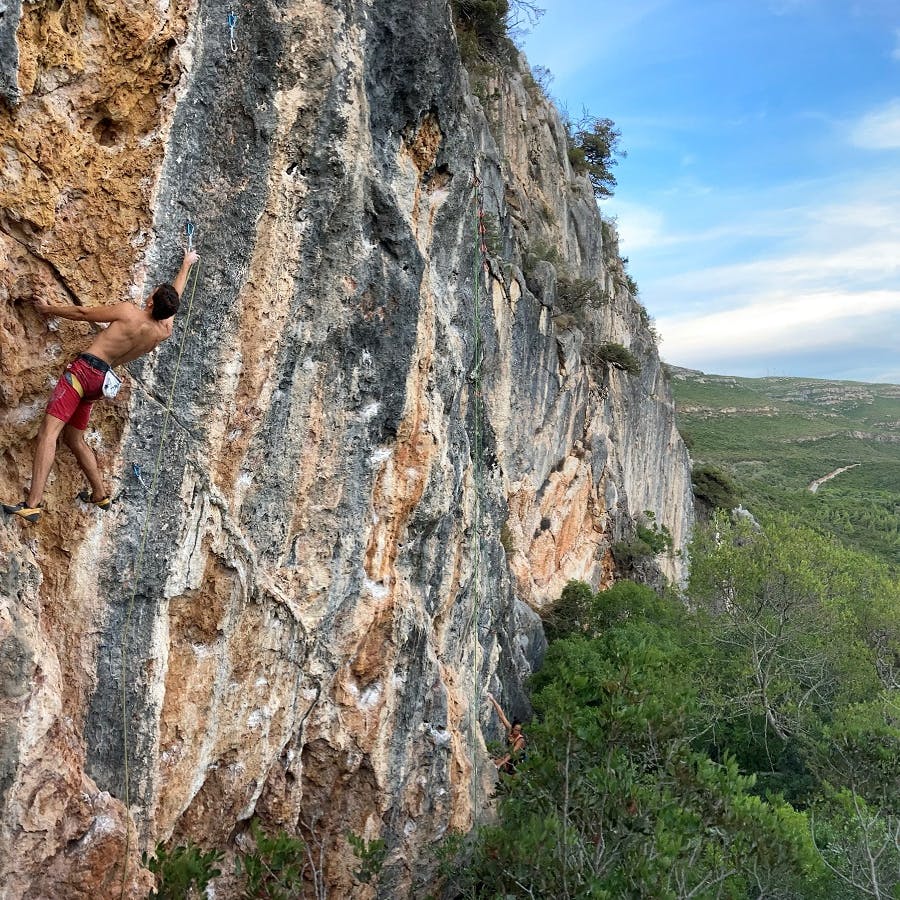
Using a drone for cliff plant monitoring
Current methods for monitoring these rare endemic species are very time consuming making it impractical to carry out population surveys with the accuracy and frequency needed to detect population trends and threats. Both species have a very narrow range but their habitat is very hard to access.
If no other monitoring approach is used, we would have to invest substantial time in continuously monitoring these populations. Accurate population size estimates would require very thorough sampling using abseiling and rock climbing techniques. Other than being logistically complex, this type of survey would be intrusive and could inadvertently disturb the cliff ecosystem.
To address this, we are using a drone to capture high resolution images which can later be processed to detect where the individuals of each species are present. After being validated and refined, we hope this approach will provide a reproducible and cost effective way to monitor the abundance and distribution of these rare species.
We also aim to use the drone and photogrammetry software to create orthophotomaps of the areas where C. edulis is to be removed. The resulting maps will help to plan the removal events but, more importantly, they provide a baseline scenario for monitoring the impact of this intervention on native vegetation. By creating the same maps every year, we hope to capture the process of recolonization by native vegetation. These surveys may demonstrate the success of the intervention or a failure of native plants to recolonize the area which would suggest that assisted revegetation may be appropriate. Finally, we expect the maps will prove useful as a way of identifying C. edulis resprouts that could be missed otherwise.
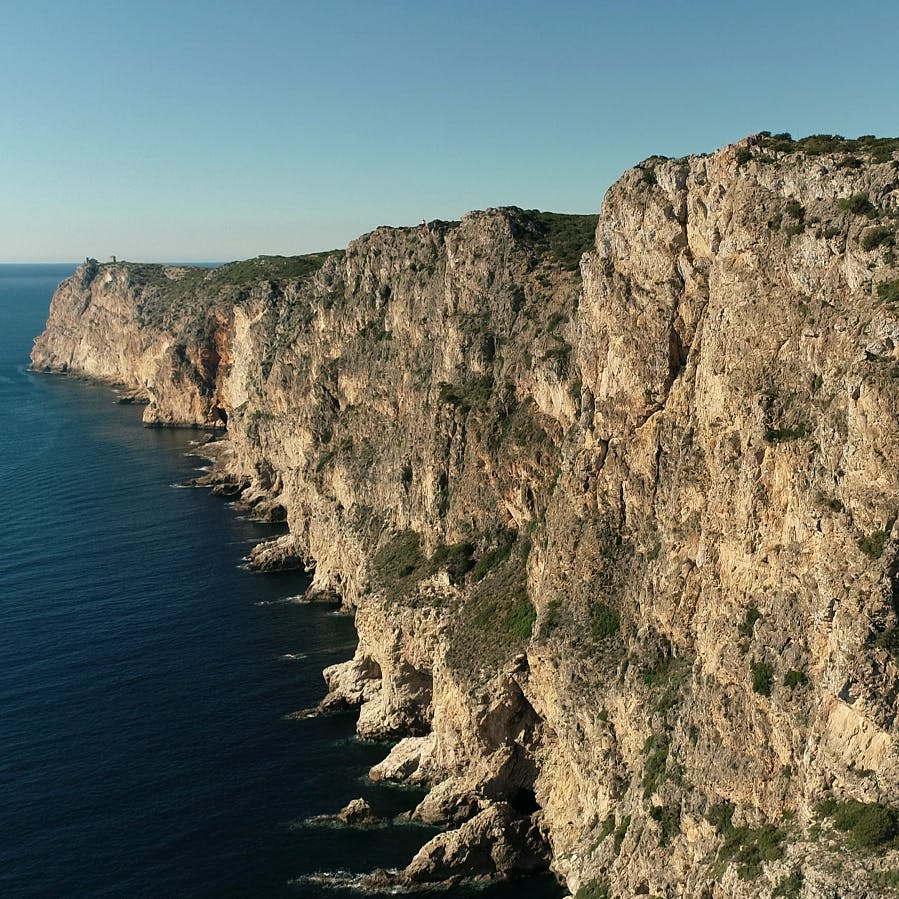
The partnerships making this project possible
We are getting all kinds of partners together for this project. The local rock climbing community and the cavers from NECA (@neca.espeleologia.arrabida on Instagram) are contributing as volunteers with their local knowledge, sweat and hard work in our invasive plant removal events.
Pix4D, a drone mapping software company, has kindly offered to sponsor our use of their software for this and other Mossy Earth projects. This is part of their ambition of using their technology to support nature conservation and restoration projects.
The Portuguese Botanical Society is contributing with crucial plant science expertise and the local park authorities (ICNF) are helping ensure our efforts fit into the broader conservation strategy for this protected area. Finally, we have the support of the local municipality (Camara Municipal de Sesimbra) for logistical issues and to coordinate with their ongoing efforts to conserve the area's unique biodiversity.
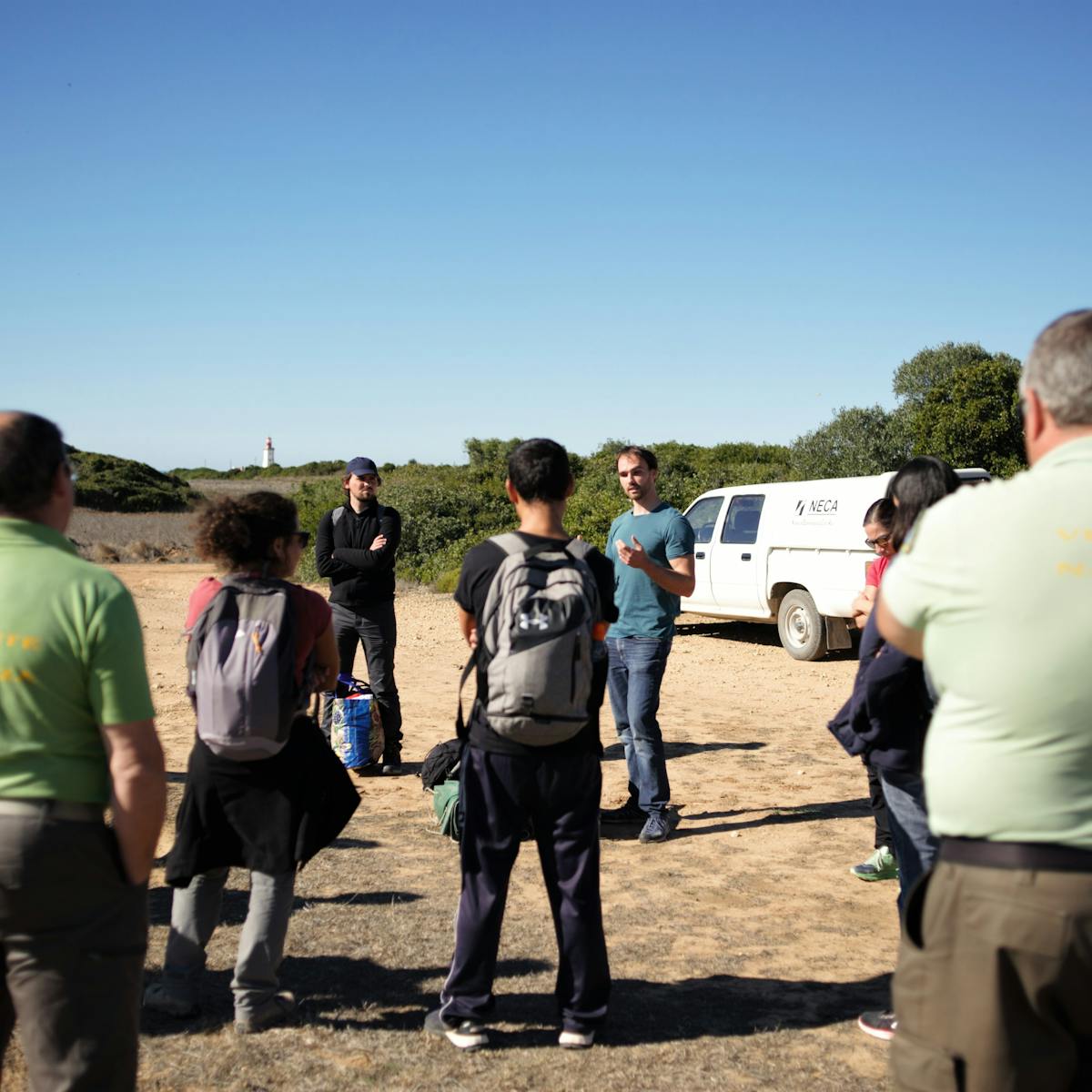

Sources & further reading

- “Lista Vermelha da Flora Vascular de Portugal Continental” - Sociedade Portuguesa de Botânica, Associação Portuguesa de Ciência da Vegetação – PHYTOS e Instituto da Conservação da Natureza e das Florestas (coord.)
- “Monographs of invasive plants in Europe: Carpobrotus” - Botany Letters
